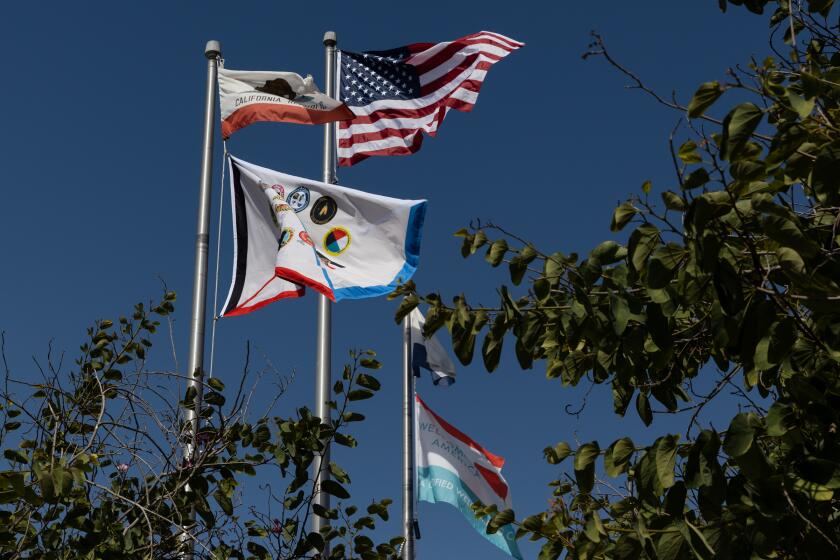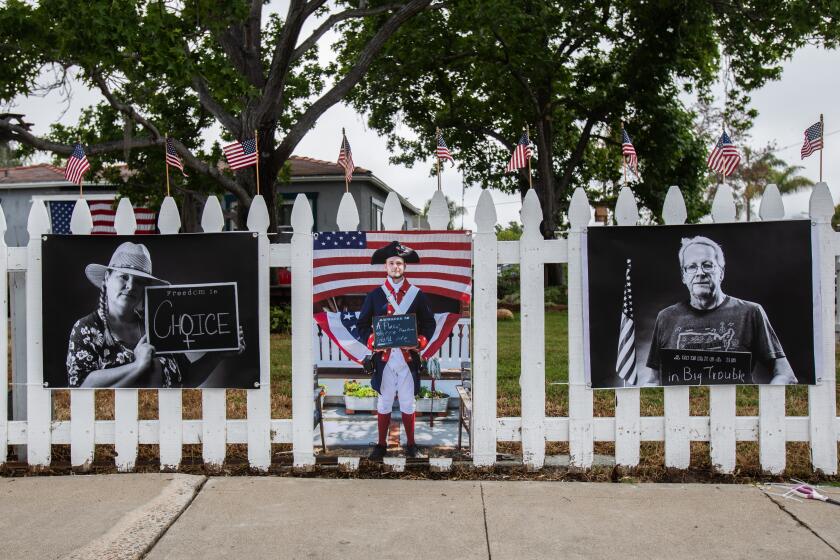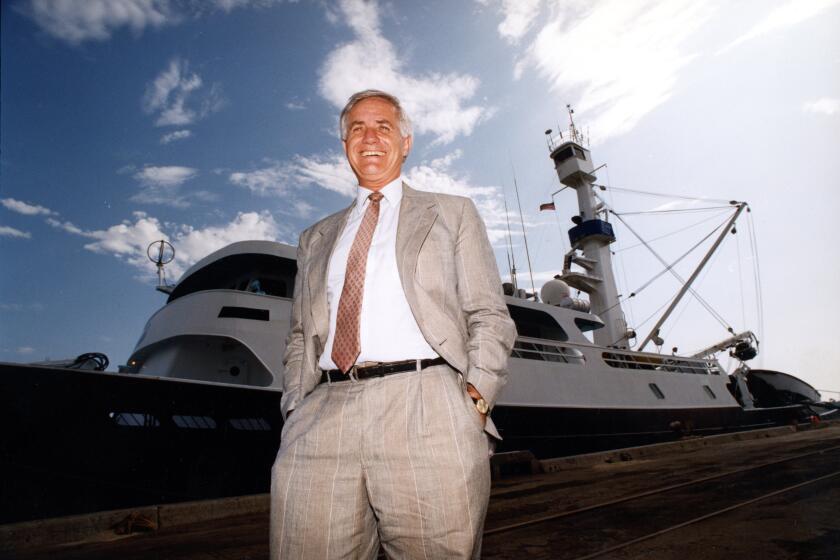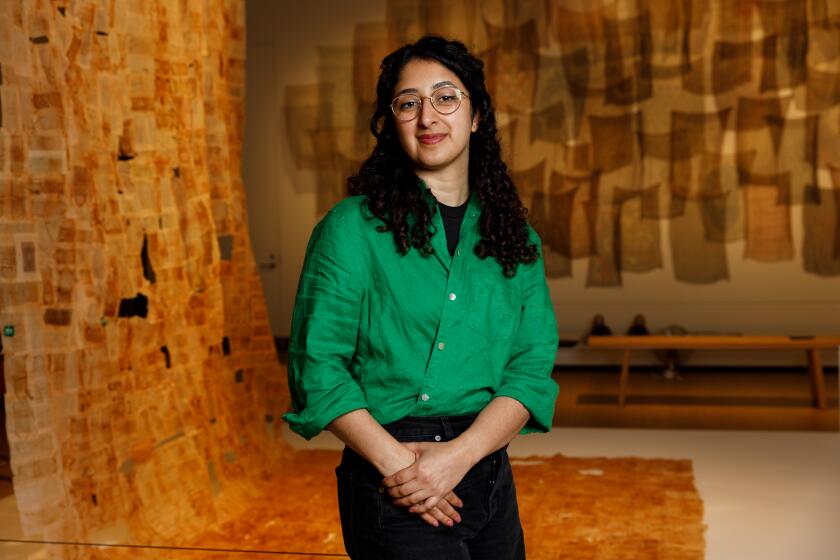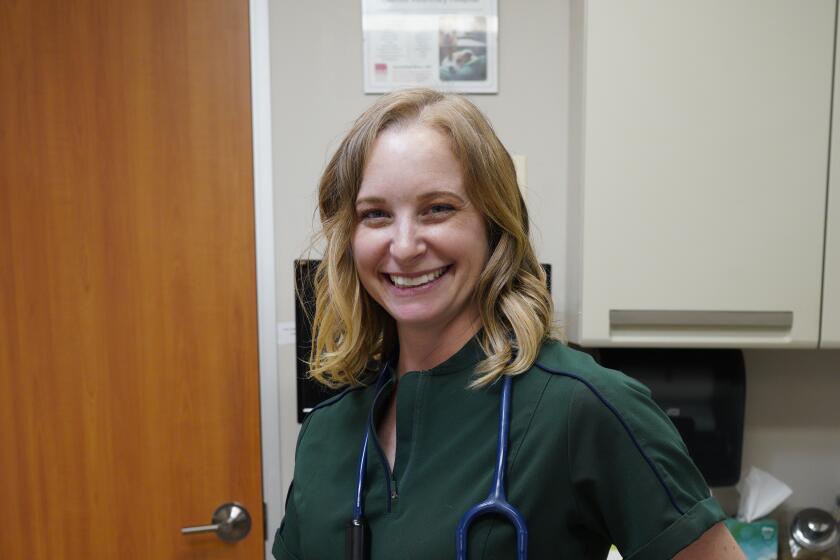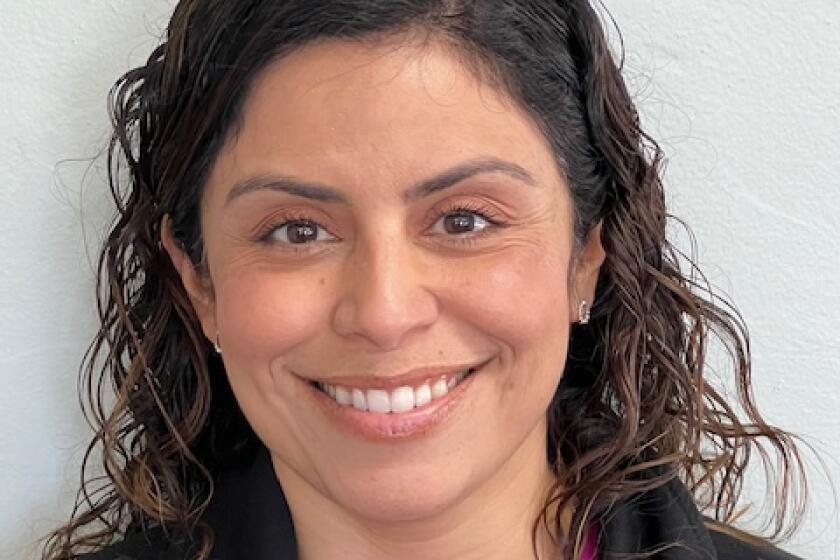Poet laureate’s defining moment
Juan Felipe Herrera, who begins his official duties next month as the new U.S. poet laureate, often talks about a defining moment 57 years ago, when he was a third-grader at Lowell Elementary School in Barrio Logan.
The son of migrant farmworkers, Herrera was in a new town, gradually learning English, trying to figure who he was and what he could do. One day his teacher, Mrs. Sampson, called him to the front of the class to sing “Three Blind Mice.”
When he finished, she told him, “You have a beautiful voice.”
“I’d been struggling until then, and she gave me the magic words,” Herrera said. “I built my whole life around that one phrase.”
It was such a turning point for him that he wrote a children’s book about it, “The Upside Down Boy,” and dedicated it to Mrs. Sampson. The publisher tried to find her before the book was printed to include some biographical information, but was unsuccessful. Herrera thought she might be dead.
That was in 2000, and by then it wasn’t just Mrs. Sampson who was acknowledging Herrera’s beautiful voice. As a poet, he’s won big awards and fellowships, published verse in magazines and books, taught at major universities. He was California’s poet laureate for two years.
In June, he was named the nation’s top poet. The kid who sang “Three Blind Mice” at Lowell was joining the ranks of Robert Frost, Gwendolyn Brooks, Billy Collins, Louise Glück.
After the announcement, his phone rang for days at his home in Fresno. Journalists from coast to coast interviewed him. He was on NPR. But none of the calls meant as much to him as the one that came from a 94-year-old lady in San Diego.
“Juan Felipe,” the voice on the other end of the line said, “this is Mrs. Sampson.”
Getting through to them
Truth is, she didn’t plan on being a teacher. “It kind of grew on me,” Lelya Sampson said.
After moving to San Diego in 1946, she thought she’d be a linotype printer, a skill she’d learned growing up in Texas. But to do that she had to belong to the typographers union, and she was told the union didn’t accept African-Americans.
She’d done a little substitute teaching in Texas, so she started doing that in San Diego, too. Her husband, James Sampson, worked for the railroad, eight days on followed by eight days off, and substitute teaching gave her the flexibility to be home when he was.
In 1955, she started full time at Lowell, now known as Perkins. She taught third grade, and she loved it. “I think maybe it was because James and I never had any kids of our own,” she said. “The students were my kids.”
She remembers telling herself when she started that she wouldn’t have any teacher’s pets in her room. “They were all my students – the good ones, the bad ones, everyone,” she said. “They all knew I would treat each of them fairly.”
But that doesn’t mean she didn’t pay attention to the kids’ individual strengths and weaknesses – who liked to play sports, who hated reading out loud, who adored history – and adjust her lessons accordingly.
“That’s what you use to get through to them,” she said.
Herrera arrived in her classroom in 1958 when he was 9. Born in Fowler, in the San Joaquin Valley, he’d traveled the state with his farmworker parents. His mother sang rhyming songs to him, one of his earliest introductions to wordplay. His father played the harmonica.
His first day at the school, he thought recess was lunchtime and ate while everyone else was playing. At lunchtime, having already eaten, he played while everybody else ate. He was an upside down boy.
Sampson used music in her classroom a lot, so even though she doesn’t remember asking Herrera to sing “Three Blind Mice,” it sounds like something she would have done, she said, if she sensed it was a way to nudge the boy out of his shy, confused shell.
“I never felt like I could get up there and sing anything,” Herrera said. “It was the last thing I was going to do. But she brought me out of the last row, turned me around and had me sing that song. And then she said those words, ‘You have a beautiful voice,’ and from then on it was just up to me to figure out what that meant and to apply it so the magic could take place.”
By year’s end, Herrera wasn’t just singing in front of the class, he was in front of the whole school, taking a solo during “Swing Low, Sweet Chariot.”
Even now, all these years later, he remembers the lines that were his. “If you get there before I do,” he sang softly during a phone interview last week, “tell all my friends I’m coming too.”
A sense of who you are
All teachers hope to make a long-lasting difference in their students’ lives, but they don’t always know if that happened.
“You don’t really realize it,” Sampson said, “until they grow up and tell you.”
She retired in 1976, and she’s stayed in contact with some of her students, especially those who are still in San Diego and cross paths with her in Mount Hope, where she’s lived in the same house since 1958, or at Bethel Baptist Church, where she’s a longtime member.
Others recognize her from a mural of her and her husband that’s on the Food 4 Less store at Market Creek Plaza, a tribute to their community service. They had been married for 68 years when he died last August.
She still has all her old class photographs, kept in their original envelopes. She said she’s proud that some of her students grew up to be doctors, ministers, school principals.
And poets.
Herrera said what Sampson did for him sounds simple, but isn’t. “If the teacher doesn’t look out for you and doesn’t see you, literally and figuratively, you’re going to have many detours,” he said. “You won’t have a sense of who you are.”
Over the years, he’s found himself using her words (“You have a beautiful voice”) countless times with his own students. “Whatever hard edge they have, whatever lack of self-worth, whatever doubt – with those five words, it all melts away,” he said.
He makes his first public appearance as U.S. poet laureate on Sept. 5 at the National Book Festival in Washington D.C. His inauguration is Sept. 15 at the Library of Congress. There’s been talk of having Sampson there to witness the ceremony.
If that doesn’t work out, Herrera said he’d like to come to San Diego and get together with his former teacher. Who, as it turns out, never really stopped teaching.
When she called him out of the blue after his appointment as laureate, they got to talking about their time together at Lowell and the other students in his class. He mentioned one student and said, “She was really smart.” And Sampson told him, “You were smart, too.”
“There she was,” Herrera said, “still waving that wand of inspiration.”
Get Essential San Diego, weekday mornings
Get top headlines from the Union-Tribune in your inbox weekday mornings, including top news, local, sports, business, entertainment and opinion.
You may occasionally receive promotional content from the San Diego Union-Tribune.


